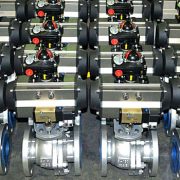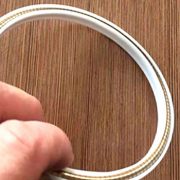The valve pressure class conversion of Mpa,LB,K,bar
PN, Class, K, bar are all units of pressure rating to express the nominal pressure rating for pipelines, valves, flanges, pipe fittings or fittings. The difference is that the pressure they represent corresponds to different reference temperatures. PN refers to the corresponding pressure at 120℃, while CLass refers to the corresponding pressure at 425.5℃. Therefore, the temperature should be taken into account in pressure conversion.
PN is mostly used in European standard systems such as DIN, EN, BS, ISO and Chinese standard system GB. Generally, the number behind “PN” is an integer number denoting pressure classes, approximately equivalent to normal temperature pressure Mpa. For valves with carbon steel bodies, PN refers to the maximum allowable working pressure when applied below 200℃; For cast iron body, it was maximum allowable working pressure when applied below 120℃; For stainless steel valve body, it was maximum allowable working pressure for service below 250℃. When operating temperature increases, meanwhile the valve body pressure decreases. Commonly used PN pressure range is (unit of Bar): PN2.5, PN6, PN10, PN16, PN25, PN40, PN63, PN100, PN160, PN250, PN320, PN400.
Class is the common valve pressure rating unit of the American system, such as Class150 or 150LB and 150#, which all belong to the American standard pressure rating, representing the pressure range of pipeline or valve. Class is the calculation result of the binding temperature and pressure of a certain metal according to ANSI B16.34 standard. The main reason pound classes do not correspond to nominal pressures is that their temperature benchmarks are different. The pressure of a gas is referred to as a “psi” or “Pounds per square inch”.
Japan mainly use the unit of K to indicate the pressure level. There is no strict correspondence between nominal pressure and pressure grade due to their different temperature reference. The approximate conversion between them is shown in the table below.
The conversion table between Class and Mpa
| Class | 150 | 300 | 400 | 600 | 800 | 900 | 1500 | 2000 | 2500 |
| Mpa | 2.0 | 5.0 | 6.8 | 11.0 | 13.0 | 15.0 | 26.0 | 33.7 | 42.0 |
| Pressure rating | medium | medium | medium | high | high | high | high | high | high |
The conversion table between Mpa and bar
| 0.05(0.5) | 0.1(1.0) | 0.25(2.5) | 0.4(4.0) | 0.6(6.0) | 0.8(8.0) |
| 1.0(10.0) | 1.6(16.0) | 2.0(20.0) | 2.5(25.0) | 4.0(40.0) | 5.0 (50.0) |
| 6.3(63.3) | 10.0(100.0) | 15.0(150.0) | 16.0(160.0) | 20.0(200.0) | 25.0(250.0) |
| 28.0(280.0) | 32.0(320.0) | 42.0 (420.0) | 50.0(500.0) | 63.0(630.0) | 80.0(800.0) |
| 100.0(1000.0) | 125.0(1250.0) | 160.0(1600.0) | 200.0(2000.0) | 250.0(2500.0) | 335.0(3350.0) |
The conversion table between lb and K
| Lb | 150 | 300 | 400 | 600 | 900 | 1500 | 2500 |
| K | 10 | 20 | 30 | 40 | 63 | 100 | / |
| Mpa | 2.0 | 5.0 | 6.8 | 10.0 | 15.0 | 25.0 | 42.0 |

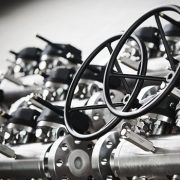
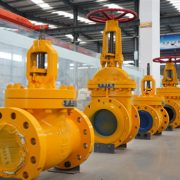
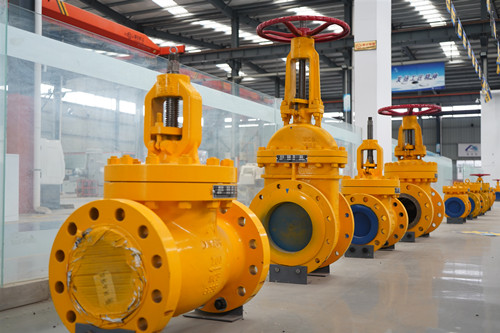
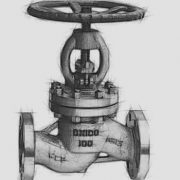
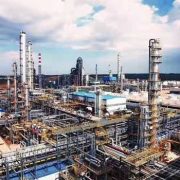
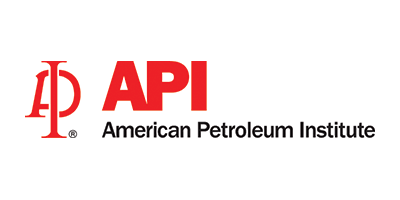 In the United States institutions system, there are several standards can be used to specify the industrial valve like ASME standard ( American Society of Mechanical Engineers), API standard (American Petroleum Institute), ANSI standard (American National Standards Institute), MSS SP standard (Manufacturers Standardization Society of the Valve and Fittings Industry). Each of them has specific specifications for valves and complements each other, here we collect a series of commonly used valve API standards for general industrial valves.
In the United States institutions system, there are several standards can be used to specify the industrial valve like ASME standard ( American Society of Mechanical Engineers), API standard (American Petroleum Institute), ANSI standard (American National Standards Institute), MSS SP standard (Manufacturers Standardization Society of the Valve and Fittings Industry). Each of them has specific specifications for valves and complements each other, here we collect a series of commonly used valve API standards for general industrial valves.